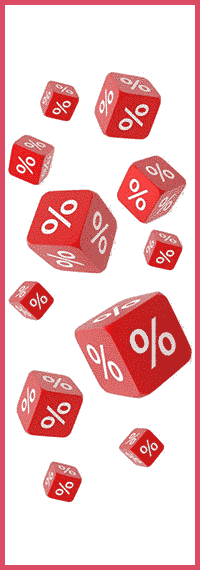FLAT RATE PERCENTAGES: As a rule, it’s business type that determines which VAT flat rate you should use.
Thus, businesses that only spend a small amount on goods or services may pay a different rate than others.
Even so, businesses which are in their first year of VAT registration can get a discount of one percent (1%).
Limited Cost Business Flat Rate
Businesses that spend a small amount on their goods will get classed as a ‘limited cost business’. This applies when the goods purchased cost less than:
- 2% of the business turnover (or)
- £1,000 a year (when the costs are over 2%)
In this case you would be paying a higher rate of 16.5%. There are ways to check your VAT flat rate and calculate whether you need to pay the higher rate. The calculations helps you work out which goods will count as costs.
A different process takes place for those who are not running a limited cost business. In these cases you use the ‘business type’ for working out VAT flat rate percentages 2022 (see below).
VAT Flat Rates 2022: Current and in Percentages
- Accountancy or book-keeping: 14.5%
- Advertising: 11%
- Agricultural services: 11%
- Any other activity not listed elsewhere: 12%
- Architect, civil and structural engineer or surveyor: 14.5%
- Boarding or care of animals: 12%
- Business services not listed elsewhere: 12%
- Catering services including restaurants and takeaways: 12.5% (4.5% between 15 July 2020 and 30 September 2021) (8.5% between 1 October 2021 and 31 March 2022)
- Computer and IT consultancy or data processing: 14.5%
- Computer repair services: 10.5%
- Entertainment or journalism: 12.5%
- Estate agency or property management services: 12%
- Farming or agriculture not listed elsewhere: 6.5%
- Film, radio, television or video production: 13%
- Financial services: 13.5%
- Forestry or fishing: 10.5%
- General building or construction services*: 9.5%
- Hairdressing or other beauty treatment services: 13%
- Hiring or renting goods: 9.5%
- Hotel or accommodation: 10.5% (0% between 15 July 2020 and 30 September 2021) (5.5% between 1 October 2021 and 31 March 2022)
- Investigation or security: 12%
- Labour-only building or construction services*: 14.5%
- Laundry or dry-cleaning services: 12%
- Lawyer or legal services: 14.5%
- Library, archive, museum, or other cultural activity: 9.5%
- Management consultancy: 14%
- Manufacturing fabricated metal products: 10.5%
- Manufacturing food: 9%
- Manufacturing not listed elsewhere: 9.5%
- Manufacturing yarn, textiles, or clothing: 9%
- Membership organisation: 8%
- Mining or quarrying: 10%
- Packaging: 9%
- Photography: 11%
- Post offices: 5%
- Printing: 8.5%
- Publishing: 11%
- Pubs: 6.5% (1% between 15 July 2020 and 30 September 2021) (4% between 1 October 2021 and 31 March 2022)
- Real estate activity not listed elsewhere: 14%
- Repairing personal or household goods: 10%
- Repairing vehicles: 8.5%
- Retailing food, confectionery, tobacco, newspapers, or children’s clothing: 4%
- Retailing pharmaceuticals, medical goods, cosmetics, or toiletries: 8%
- Retailing not listed elsewhere: 7.5%
- Retailing vehicles or fuel: 6.5%
- Secretarial services: 13%
- Social work: 11%
- Sport or recreation: 8.5%
- Transport or storage, including couriers, freight, removals, and taxis: 10%
- Travel agency: 10.5%
- Veterinary medicine: 11%
- Wholesaling agricultural products: 8%
- Wholesaling food: 7.5%
- Wholesaling not listed elsewhere: 8.5%

Note: Special rules apply to ‘labour-only building or construction services*’. It refers to building services where the value of materials supplied is below 10% of the turnover for those services. The business gets classed as ‘general building or construction services’ if it is more than this amount.
Calculating Flat Rate VAT 2022/23
You need to multiply the VAT flat rate percentage by the business ‘VAT inclusive turnover’ to work out how much tax to pay.
VAT inclusive turnover is not the same as standard VAT turnover. It combines business income from sales as well as Value Added Tax paid on that income.
An Example:
The bill paid by a customer is £2,000 plus VAT at 20% which makes £2,400 in total.
Your business type is catering which means the VAT flat rate for the business is 12.5%.
The VAT flat rate payment would be £300 (12.5% of £2,400) to pay in this example calculation.
You can get further help by calling the VAT Helpline at HMRC. They will try to answer your questions about the Flat Rate VAT Scheme for Value Added Tax.

